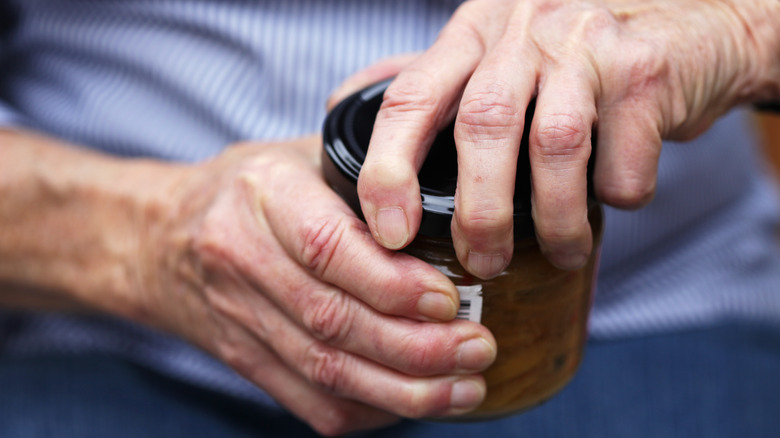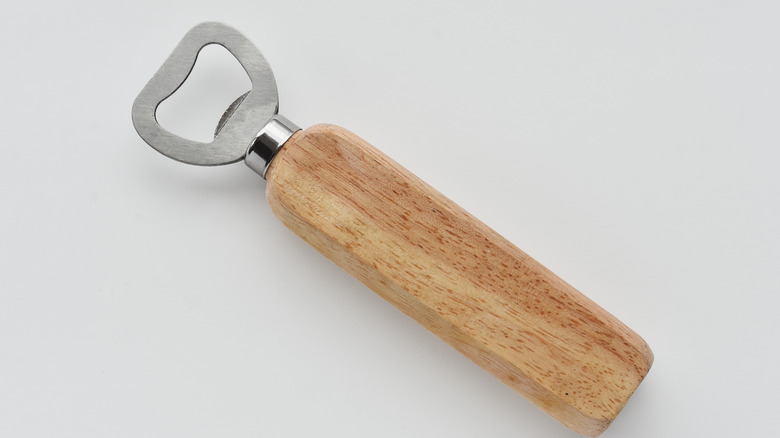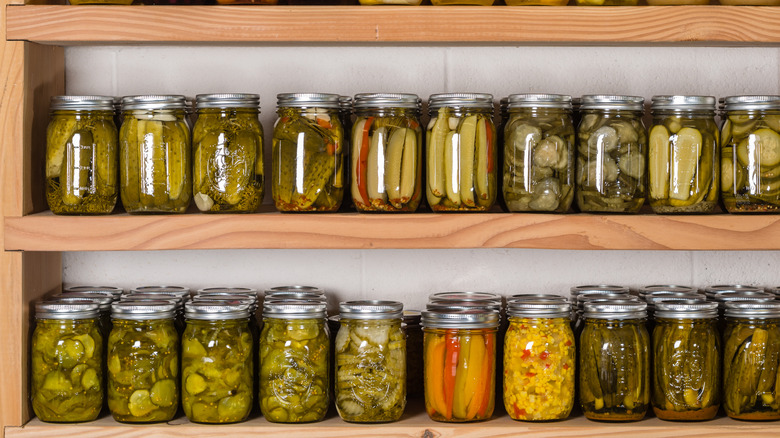Never Struggle To Open A Jar Again With One Easy Bottle Opener Hack
There's nothing worse than craving a nice tangy pickle only to battle with a lid that is too tight to open. Peach preserves and baby food jars can challenge even the strongest person, and constantly straining to twist that top is enough to take the joy out of eating whatever treat you are craving.
You'll never struggle to open a jar again with one easy bottle opener hack that will change your life, save your wrists, and keep you in a good mood. While a bottle opener is a must in any kitchen, this handy gadget can pull double duty by easily opening rigid lids. Usually designed to pop the cap on bottles of soda or beer, that same item works to break an airtight seal on jars.
For anyone who has groaned, grumbled, and cursed a stubborn lid that won't come off, this tip will also save you from the cringeworthy act of asking someone to twist open that jar for you. And if anyone asks why you don't need your go-to jar opener anymore — just say you've been working out.
Using a bottle opener makes it easy
Everyone has their own advice for opening jars. Some suggest running the lid under hot water, while others say bashing the sides of a metal top with a butter knife or small hammer works.
The simplicity of how a basic bottle opener works on too-tight tops is almost magical. Just like popping the cap on a soda or beer, all you have to do is use the pointed or rounded tip under the lid and break the vacuum seal. Don't puncture the metal or apply too much pressure; just work that tool as if you were opening your favorite brewski. After that, twist to release.
Why are these items so hard to get into in the first place? Most factories seal their jars when the contents are warm, which causes air to contract as it cools, helping in the vacuum-sealing process. The second reason is a little gross. Sometimes, trace amounts of food are left in the threading of the top, which can act like glue.
Store food properly after breaking the seal
Once the seal of a jar is broken, refrigeration is necessary for most items. The sealing of that oh-so-tight lid ensures a sterile environment that prevents the growth of bacteria, so when you open your pasta sauce, that protection is gone.
The growth of contaminants can slow in a refrigerator much better than at room temperature. Keeping food cooled at 40 F or lower slows the buildup of nasty stuff like bacteria, which can increase the risk of food poisoning. A good rule of thumb is that if you hear a popping sound when a seal breaks, you should store it in your refrigerator.
Home canned goods should follow the same rule for those who took advantage of summer's bounty to make their favorite jam recipes or other preserves. Once your homemade quick pickled garlic jalapeños or tomato preserves are safely prepared, the glass containers should be labeled, dated, and kept in a cool, dark, dry place at 50-70 F. If you need a canning 101 primer, be sure to follow all the directions closely to avoid spoilage.


